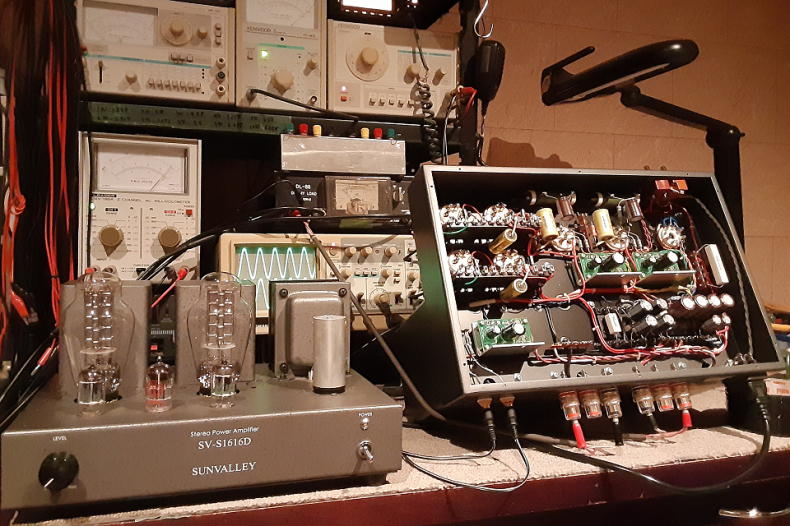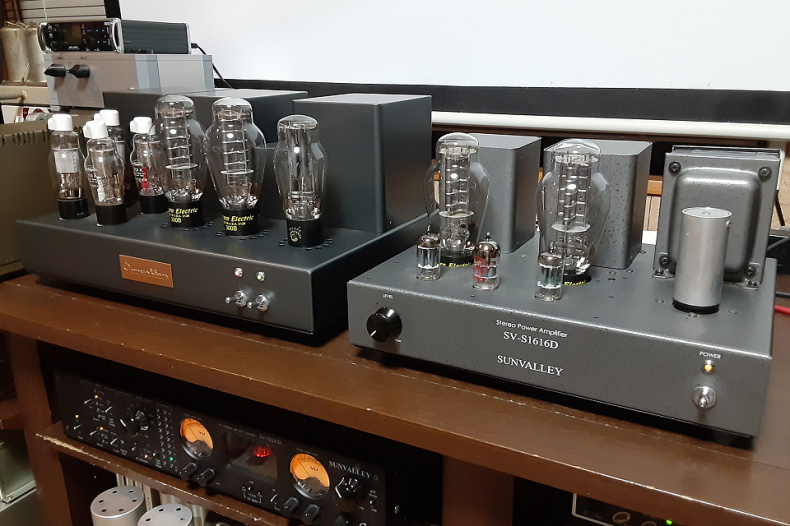Tuner's ears and the Western Electric 300B
September 22, 2024 (Google Translated from MR Ohashi's Bolg)I heard a very interesting story today.
At the request of an old friend, a piano tuner came to Nagoya for work and said he wanted to hear how old Tannoys sounded with a Western Electric 300B, so I invited him over.

By chance, I had just finished checking the characteristics and aging of PSVANE 300B to Western Electric 300B, so I thought it would be a great opportunity to interview him and find out how a sound professional working in a different field from us could distinguish between the two, which are both 300Bs but have a price difference of more than 10 times.
The CD he brought was Chopin by Pollini .

First, I compared the PSVANE 300B and Western Electric 300B specifications of the SV-S1616D, then did the same comparison listening test with the SV-91B. The volume is exactly the same, and the output is just under 1W, but the sound is quite loud on the Autograph.
When I was asked how I would express this difference as an audio expert, I replied that the Western sounds clearer because the overtones are well-ordered, do not clash, and have a more relaxed sound.
 Then, that person said,
Then, that person said,"The reason why we tune pianos by human ears rather than a digital tuner is because tuning each and every note individually is not called tuning. Our job is to adjust the sound that is created when the hammer strikes the strings, the soundboard amplified, and the frame supports the sound. If you simply tune each string, the overtones will clash and make the sound muddy in a certain frequency range, or the volume will drop and make it difficult for the audience to hear. That's why we don't just play a single note, but play all 88 keys to find the overall tone of the sound; in other words, we try to adjust the tone and bring out the best in it. It's more like not only listening with your ears, but feeling the vibrations transmitted from your fingers with your body."
" he said. And
"In that respect, the sound of the Western 300B is very natural and comfortable with few dissonances. Actually, the sound of this CD is unnatural from around D#7 onwards, and the harmonics in the high range are slightly distorted. The cheaper 300B seems to compensate quite well, but the Western is more natural and the peak of the harmonics is much suppressed, although not completely
." He also said that the difference between the S1616D and the 91B is "the weight of the left hand", which was very impressive.
On my way home, I asked if they could tune my upright piano, and they said, "Your instrument has already been accustomed to a certain sound by the previous tuner, so you should not change tuners halfway through. The unique "sound" that has been created over time will die." I had never directly asked him about the work of tuning pianos, but I was impressed by the fact that we have a lot in common, even though we are in different industries.
Sounds like after some conglomeration of mechanical bits and pieces takes on a certain level of complexity, it begins to exhibit aspects of personality. If malleable along some dimension like "frequency", that personality can be killed off and replaced with a somewhat different one - while still retaining proper functionality."Your instrument has already been accustomed to a certain sound by the previous tuner, so you should not change tuners halfway through. The unique "sound" that has been created over time will die."